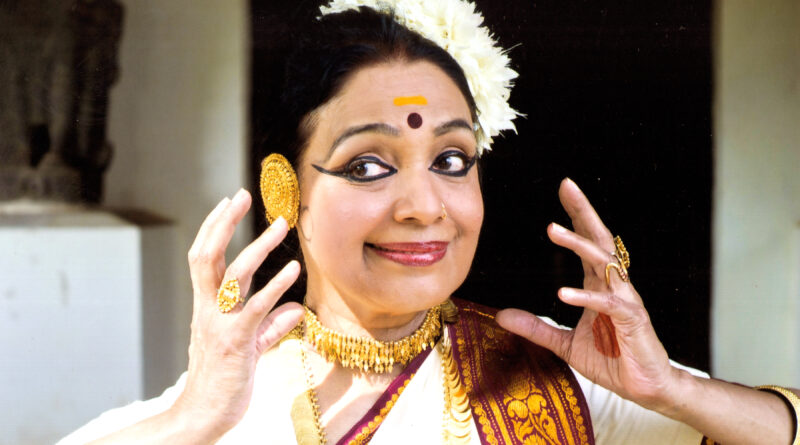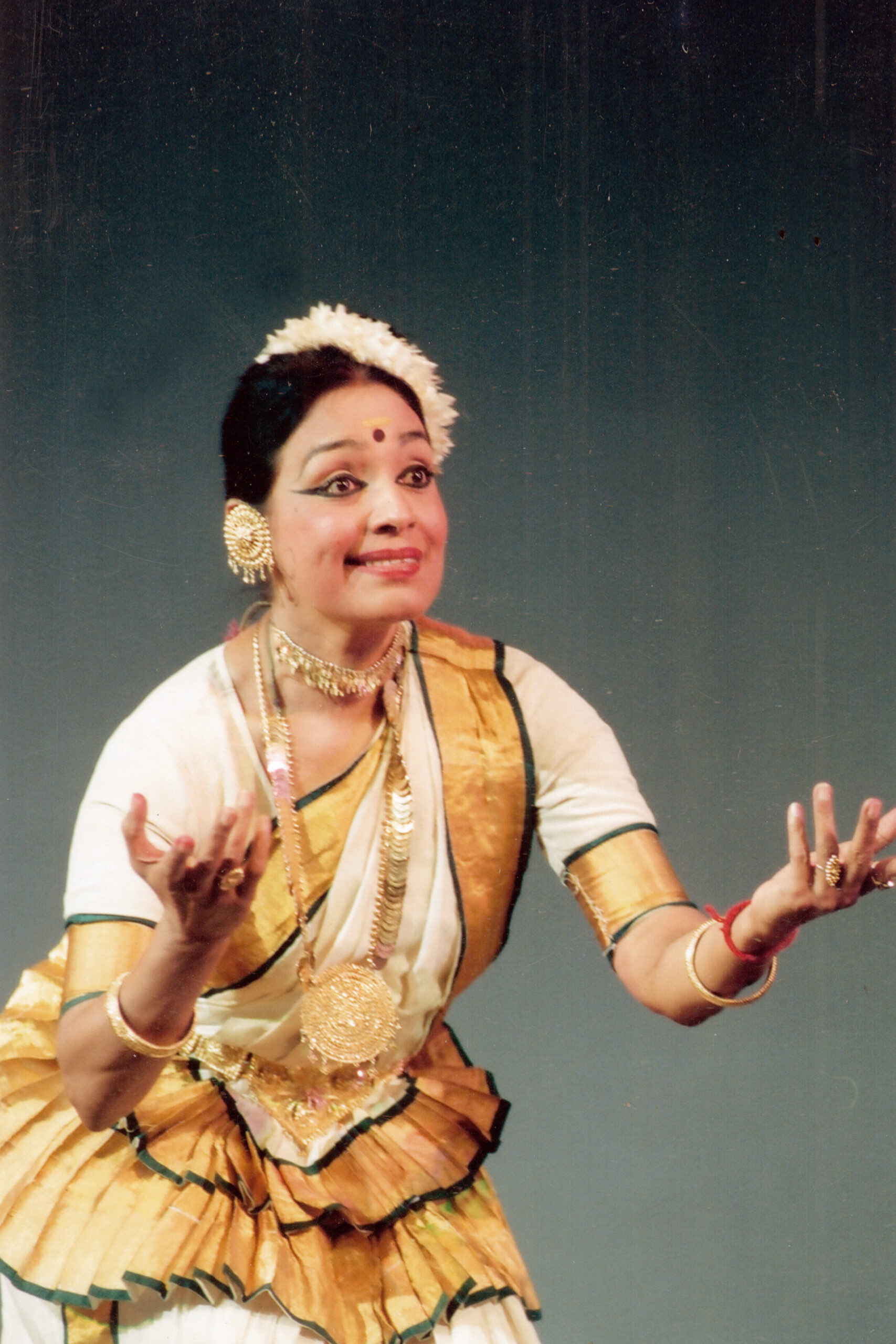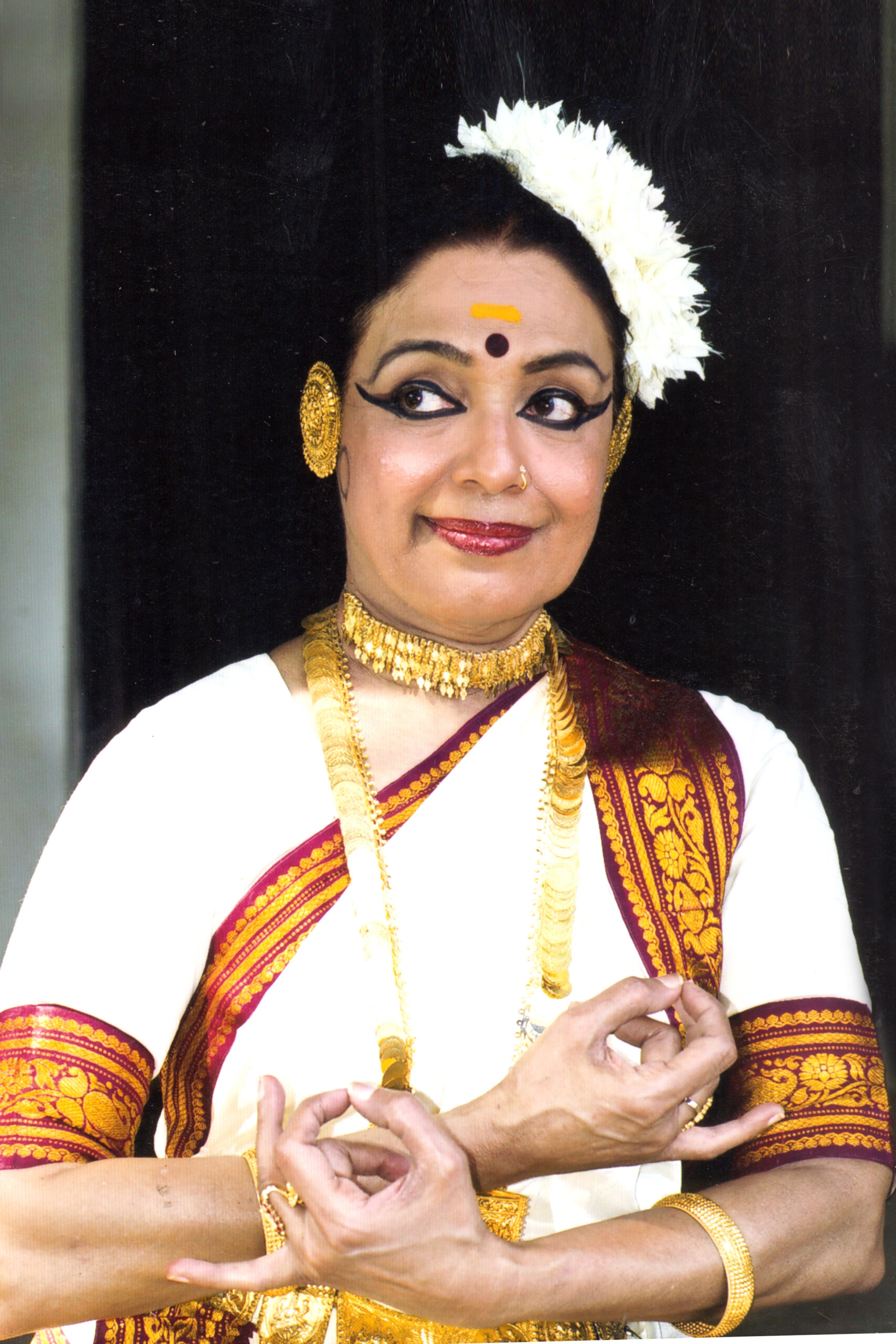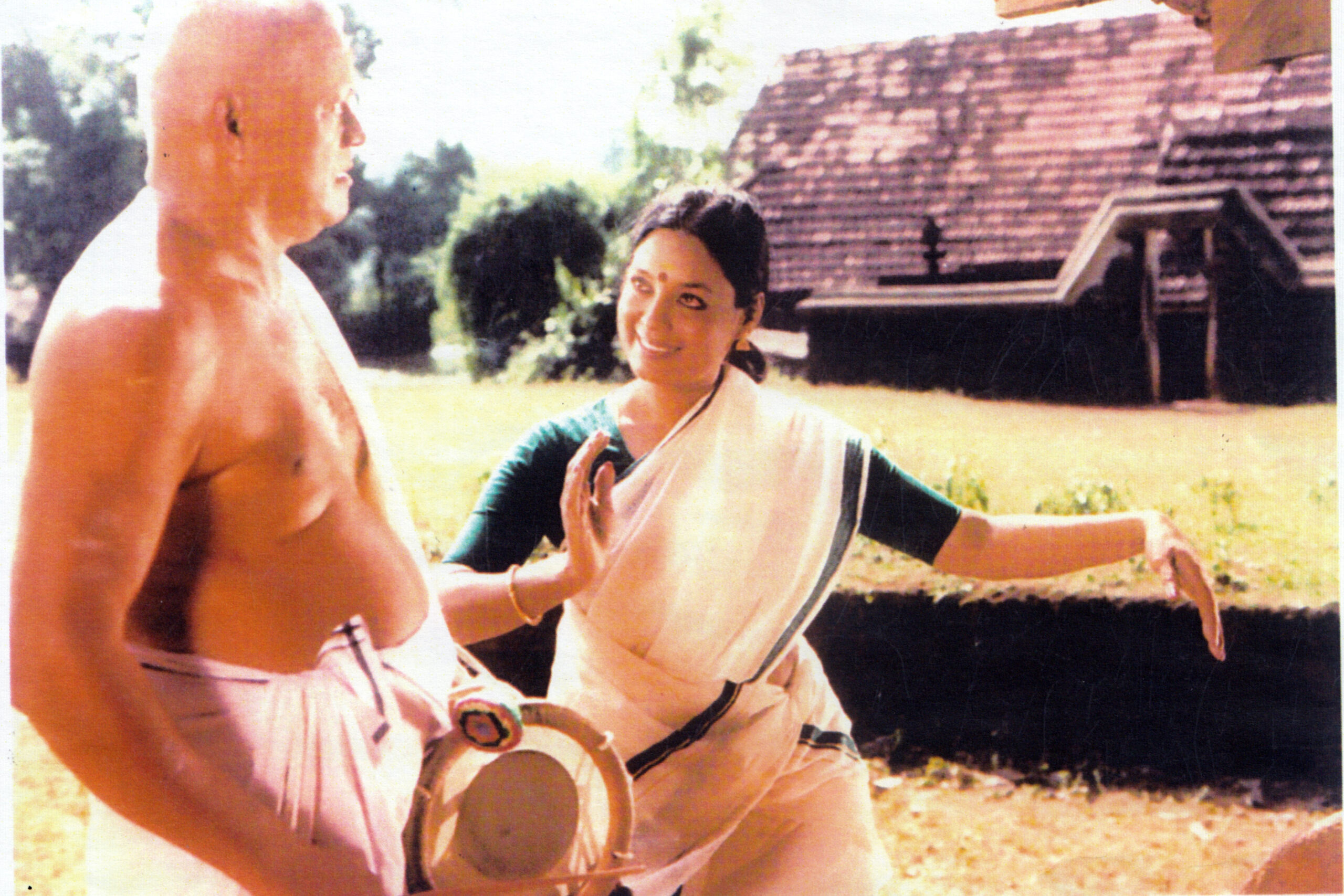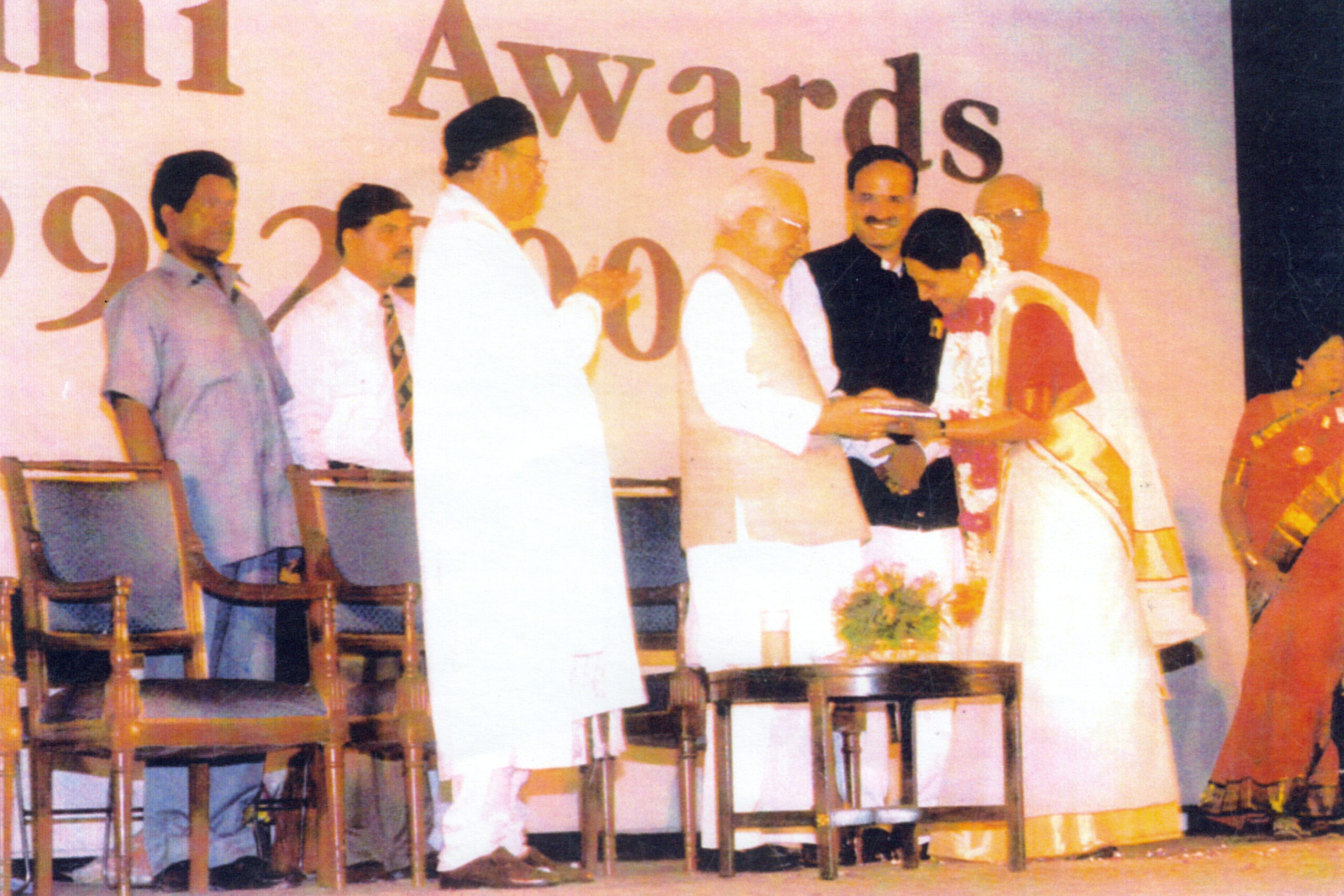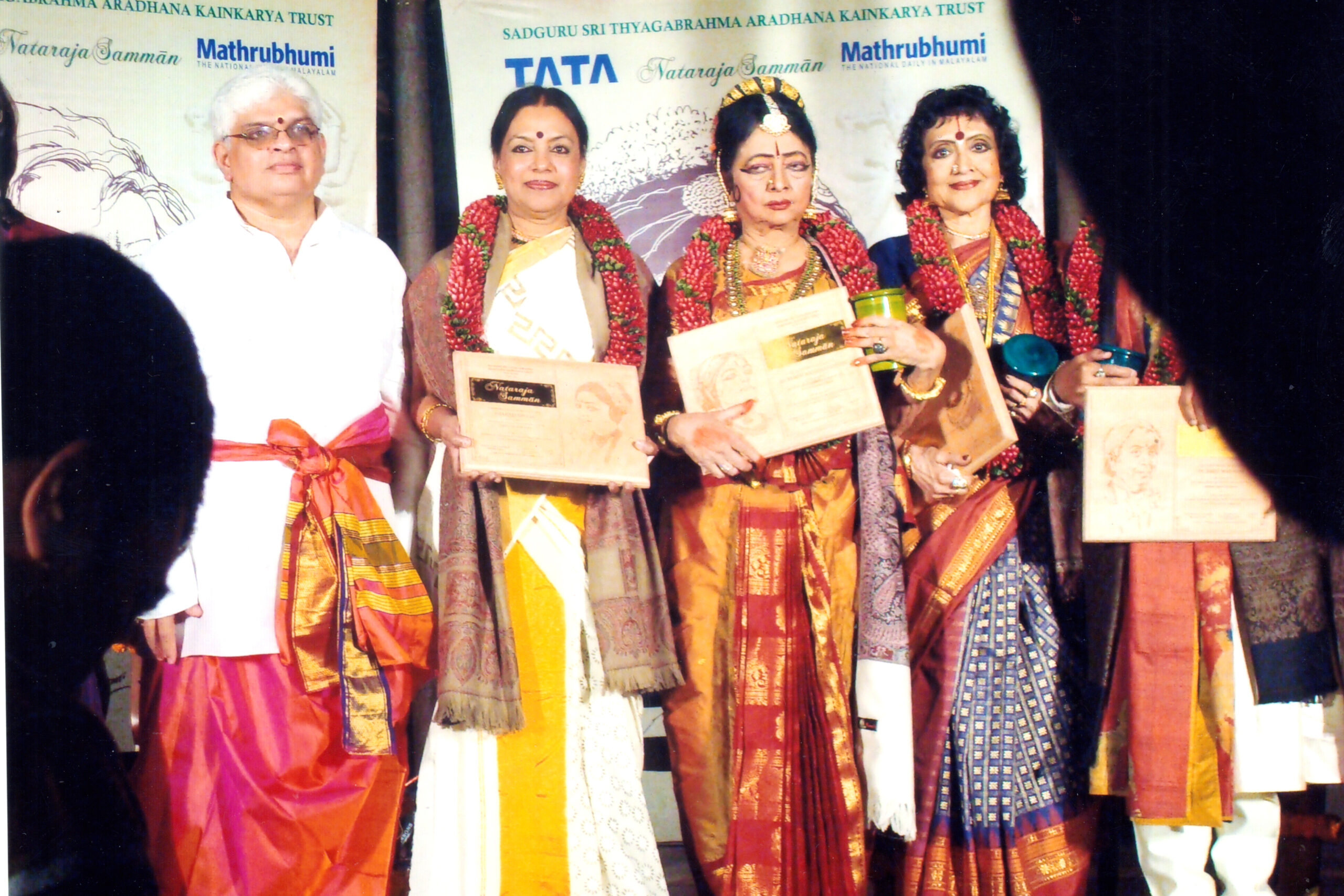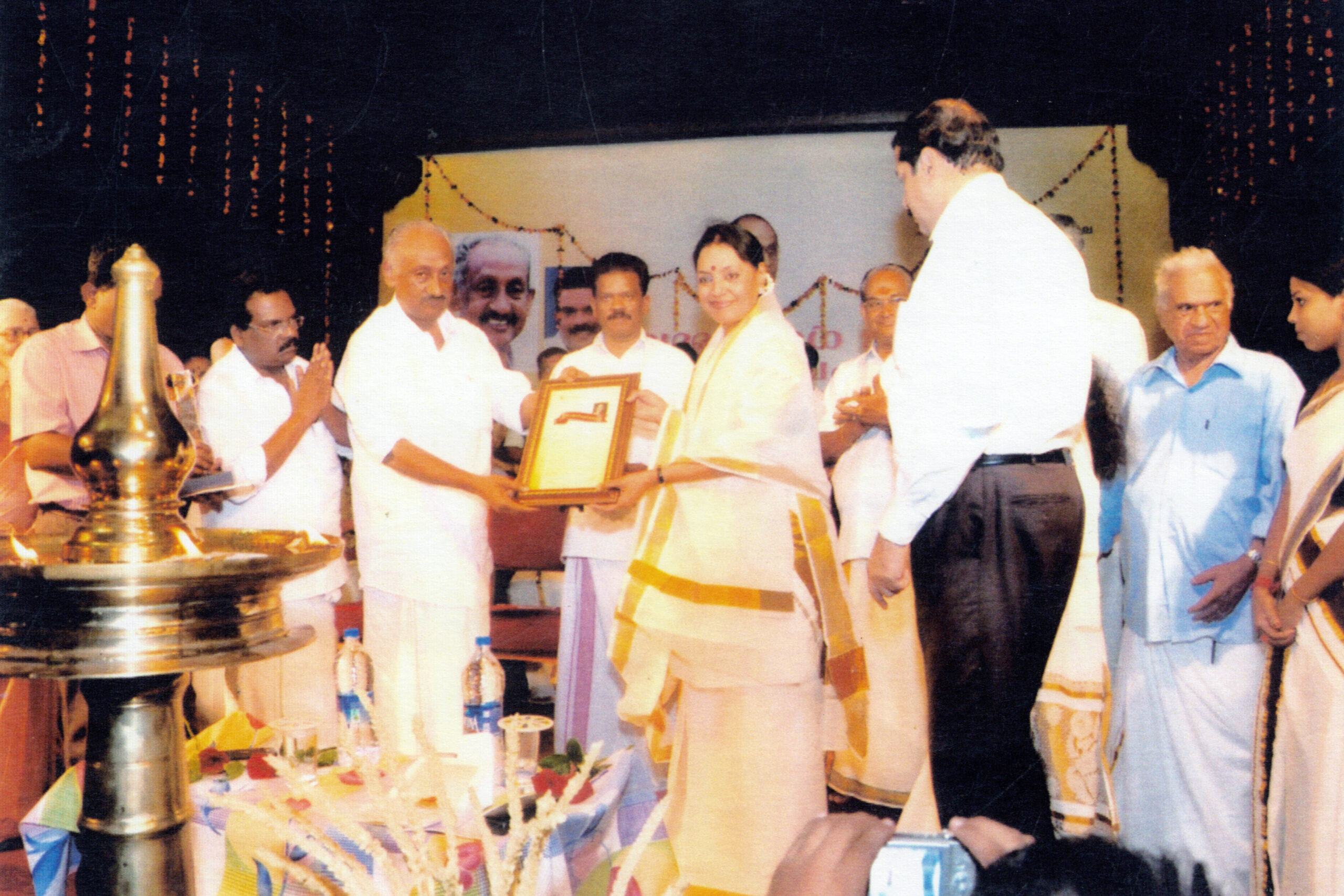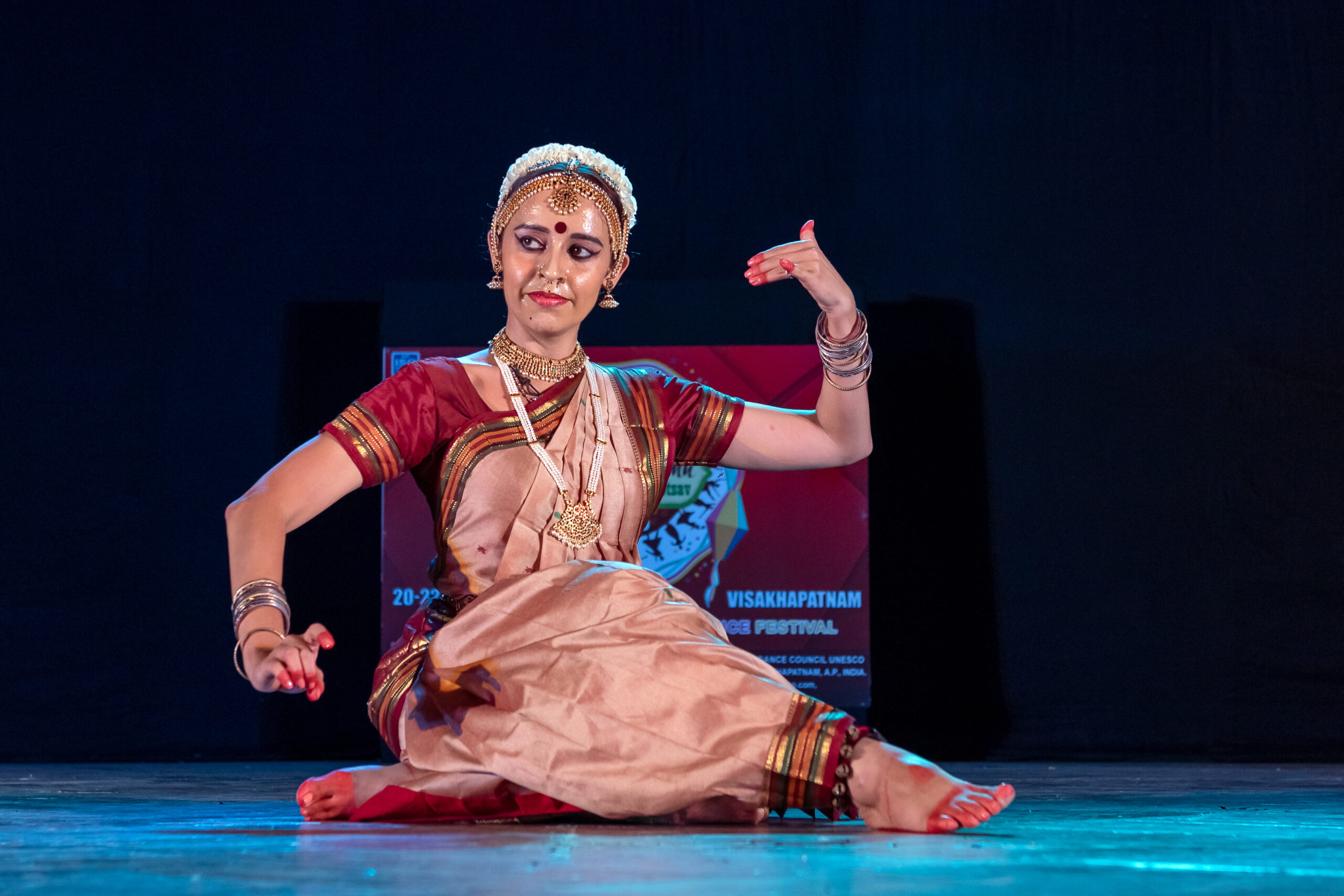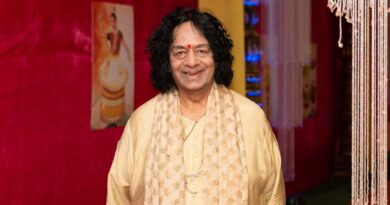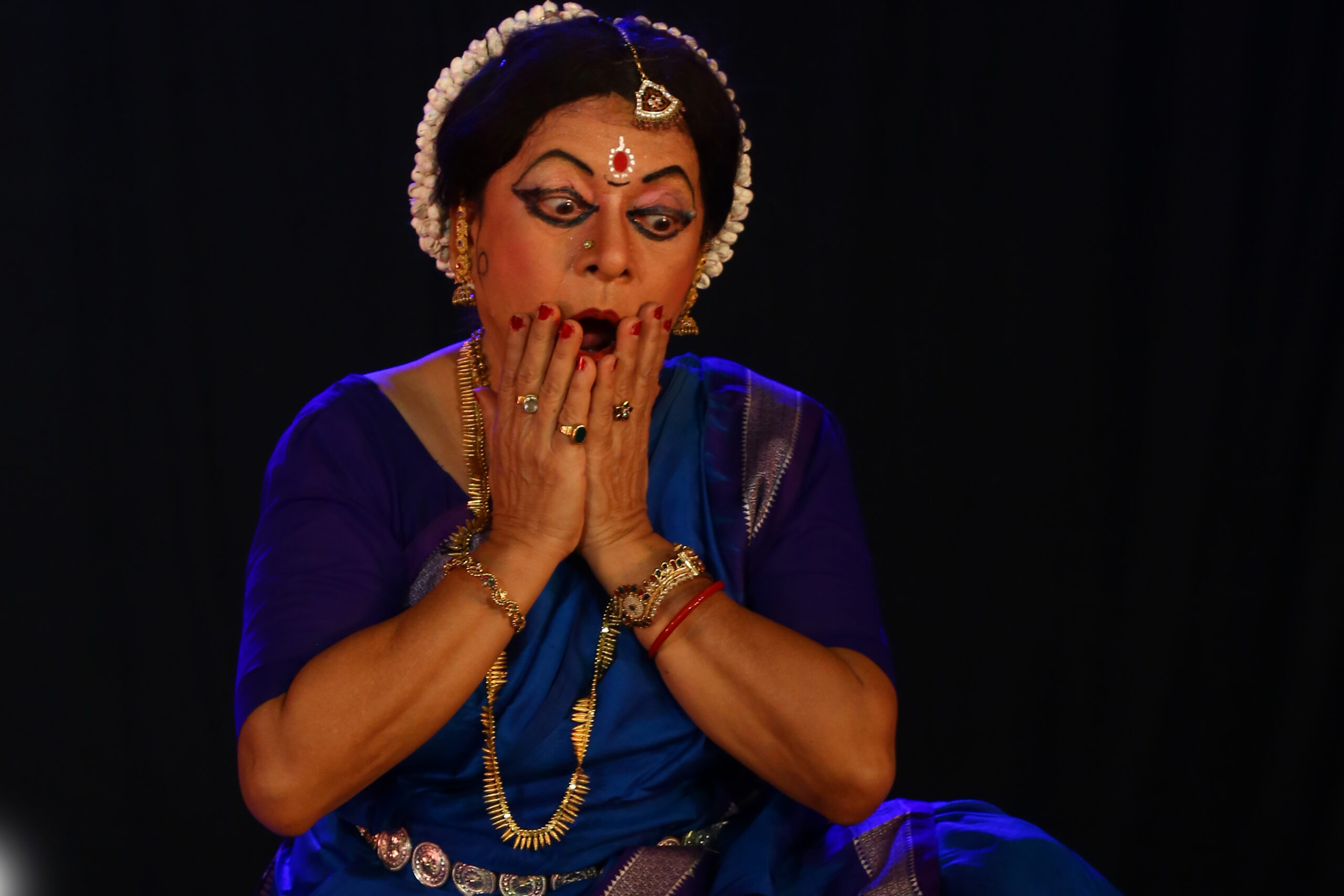Bharati Shivaji: A Name Synonymous with Mohiniyattam

Text: Paul Nicodemus
She is a unique combination of a performer, choreographer, researcher, author and guru — someone who has widened the horizons of Mohiniyattam, the exquisite and graceful dance form of Kerala and put it on the world map. Today, Bharati Shivaji is a name synonymous with Mohiniyattam.She was born in Kumbakonam, Thanjavur and her maternal family have been performers of the traditional Bhagavata Mela. Her mother, Shankari Krishnamurthy was a Carnatic musician and a disciple of Maharajapuram Viswanatha Iyer. Her family migrated to the north as her father, Krishnamurthy Iyer, got a job at Tata, Jamshedpur. Her mother was keen on making her learn Bharatanatyam but in Jamshedpur, there were no Bharatanatyam teachers. So she brought down a Bharatanatyam teacher from Madras to teach Bharati when she was 8 years old. Soon, several other south Indian families sent their children to learn Bharatanatyam. Her first Bharatanatyam teacher was Guru Janakiraman, while her mother sang for her.
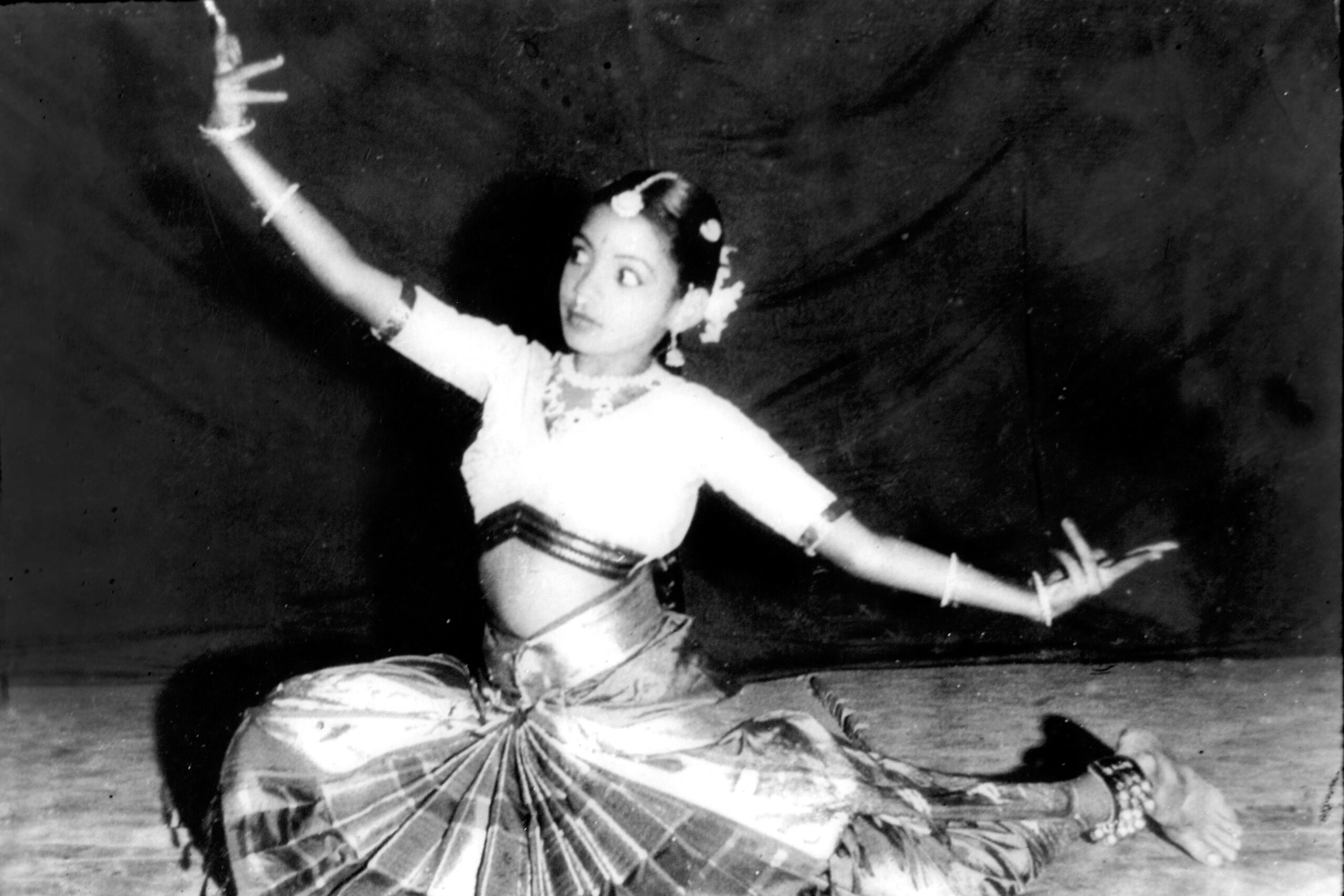
As Bharati grew up she started performing in the steel cities like Bokaro, Bhilai, Durgapur and others. However, her first stint in dance came to an end when she got married to D Shivaji, a chartered accountant, in 1965. Later, her husband got a job in one of the public sectors and the couple moved to Delhi. Life took a different turn once she arrived in Delhi. One day in the late ’60s, she chanced upon the Sangeet Natak Akademi and met her guru Lalita Shastri from Kalakshetra. She resumed her dance training under her but the style was different from her earlier teacher. Her former guru taught her the Vazhuvoor style, and the latter taught her the Pandanallur style. Under guru Lalitha, she again started from the basics. In 1970, she went on her maiden trip abroad. “It was wonderful to get back to dance. I once again resumed my training. Opportunities flowed in a big city like Delhi and I accompanied my guru to Japan which was led by Sonal Mansingh,” she says.
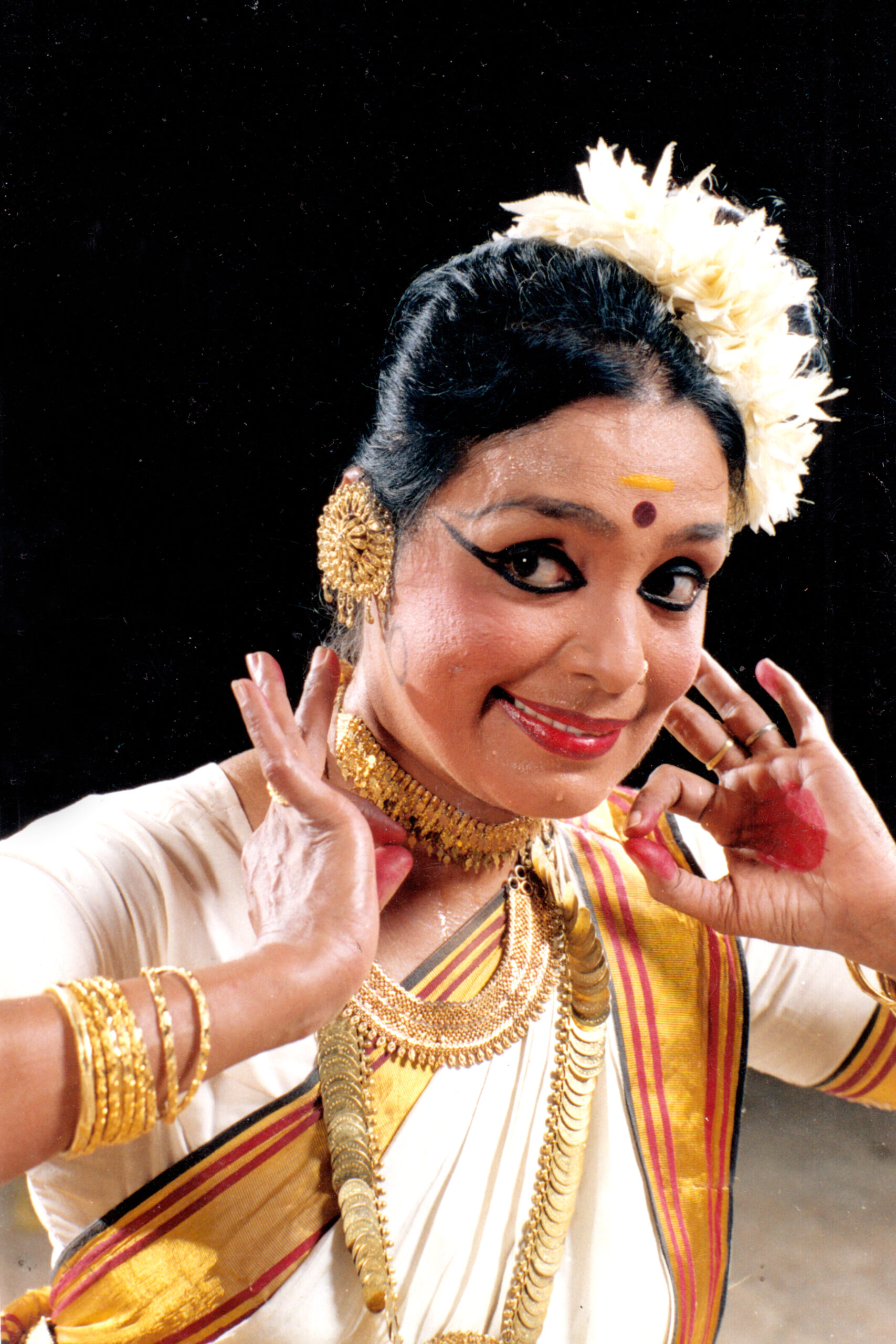
Bharati Shivaji’s guru always projected her and she performed on various occasions. Soon, she received a national scholarship to pursue advanced training in Bharatanatyam from the ministry of culture. Jamshedpur was a small town with limited exposure but in Delhi, many things happened around her and she had time to witness many dance forms. “During those days, I had a wider exposure to dance. It was a wonderful period,” she says. That was the time Odissi was becoming popular in Delhi and she met some Odissi dancers. Those days it was mandatory for students of dance to learn music. As a child, she was always interested in learning Hindustani music despite her mother being a Carnatic musician. She loved the melody in Hindustani music and learnt it from Sangeet Samaj, an institute in Jamshedpur. “I never realised all the little things of life like learning Hindustani music would come in handy one day,” she says. One day, she met Guru Kelucharan Mohapatra and Trinath Maharana. By then, Guru Kelucharan was working on developing the repertoire of Odissi. It was a period when Indian classical dances were being structured and classified. “Guruji asked me to learn Odissi. That was also a time when Odissi had two great artistes, Sanjukta Panigrahi and Sonal Mansingh. So for a brief period, I had a unique opportunity to sing for Odissi dancers. The Odissi music at the time was a blend of both Carnatic and Hindustani music. I was witness to all the good work that was being done in Odissi. It was an enriching and learning experience for me to listen to Guru Kelucharan Mohapatra, Bhubaneswar Mishra and Raghunath Panigrahi,” she shares. It was then that she learnt the basics of Odissi. The technique of Odissi differed from Bharatanatyam.
In the mid-’70s, Bharati happened to watch ‘An Evening of Indian Classical Dance’ in Delhi. On the evening, Indrani Rahman performed Bharatanatyam, Odissi, Kuchipudi and Mohiniyattam. “She had such a beautiful stage presence and for the first time in my life, I watched a Mohiniyattam performance. She herself looked like an enchantress. The performance completely fascinated me and I went backstage to inquire about the guru who taught Indrani this dance form,” she says. Indrani told her she learnt from Chinnamuamma in Kalamandalam. But she realised that she may not be able to go to Kerala. Bharati was so smitten by the dance form that she discussed it among her friends. A well-known dance critic of the time told her he found somebody in Delhi who might teach her Mohiniattam. That’s how she came to know about Radha Marar from Kalamandalam, who was at Natya Ballet Centre in Delhi. “It thrilled me to know that I need not go to Kerala and yet learn Mohiniyattam. I met her and requested her to teach me the dance form,” she says. In the beginning, Radha expressed disbelief that somebody wanted to learn Mohiniyattam in Delhi. She taught Bharati the basics of Mohiniyattam and Bharati thoroughly enjoyed it.
After learning for a while, she felt the movements were repetitive and limited. She completed learning the basics in no time as she was from a Bharatanatyam discipline. She often wondered what would have potentially gone wrong with such a beautiful art form. At a time when she knew that a lot was being done with Odissi, she questioned why it could not be done for Mohiniyattam. Being a witness to Odissi’s structuring process and given her strong training in Bharatanatyam, she felt the vocabulary of Mohiniyattam could be developed as it had great potential. However, she continued to perform whatever little Mohiniyattam she had learnt and one evening at the India International Centre in Delhi, she performed. Kamaladevi Chattopadhyay, a great visionary, freedom fighter and someone who contributed immensely in the revival of many dying indigenous art forms of India post Independence witnessed her performance. She was not only the president of India International Centre but by then she was also the chairperson of the Sangeet Natak Akademi. The next day, Bharati received a message from the Sangeet Natak Akademi stating the chairperson wanted to meet her. “I went into her room and she said that she has been wanting to do something for Mohiniyattam. She wanted an artiste to take up the project under the initiation of the Sangeet Natak Akademi. She asked if I was willing to take up the project. I went in expecting rebuttal and in turn, she offered me this opportunity. I simply answered ‘Yes’ without knowing what I was getting into. I was so excited,” she reveals. After a few days, she again went back to Kamaladevi’s office, and she was introduced to Kavalam Narayana Panicker, one of the most illustrious authorities in theatre in the country and was told that she would work with him. She had no idea about his background. At the behest of the late Kamaladevi Chattopadhyay, she undertook research in Mohiniyattam under a fellowship scheme from the Sangeet Natak Akademi. For further research, she received yet another senior fellowship from the department of culture, ministry of HRD, Government of India.
Her family dissuaded her from taking up the project as she knew nobody in Kerala. But she went to Kerala and upon reaching, she came to know about Kavalam Panicker and what a great luminary he was. He was a poet, lyricist, theatre personality and the greatest authority on the folklore tradition of Kerala. “In the first few visits, Kavalam sir introduced and exposed me to the vibrant cultural scene of Kerala. I was from Tamil Nadu and it was amazing to see the neighbouring state with such a distinct and indigenous culture. He sent me to various places and sometimes accompanied me. It was a fantastic experience to watch the several indigenous art traditions of Kerala,” she says.
Her first-hand encounters with the traditions and culture of Kerala helped her deduce a connection with lasya of Mohiniyattam. With Kavalam Panicker as her guide, her interactions with the artistes of Kerala helped her to weave the inner threads of Mohiniyattam. “Kerala is a magical place where you get the rich tala traditions of India,” she says. Over time, she met artistes, scholars and historians who guided her to understand the essence of regional culture in Kerala. “My entire approach to Mohiniyattam has been a holistic one,” she explains. Her pursuit of Mohiniyattam also started her into other regional art forms of Kerala thus enabling her to imbibe the aesthetics of Mohiniyattam not in isolation but in the significant relation to the inter-disciplinary traditions of Kerala, be it theatre, music, sculpture, painting, architecture and literature. She embarked on a process of assimilating elements from various art forms in which she discerned an affinity with lasya, the feminine spirit which constitutes the quintessence of Mohiniyattam.
According to historical evidences Mohiniyattam originated from Trivandrum during the period of Swati Tirunal. Everything survived as an oral tradition and nothing was documented. So it only thrived in Travancore. Mohiniyattam in isolation had a limited repertoire. Swati Tirunal designed it with the help of the Thanjavur Quartet. Tirunal was a great scholar who patronised arts and with their help, by including local content, he tried to give Mohiniyattam a certain stature. Sugandavalli, a devadasi who accompanied the Thanjavur quartet, performed the repertoire
Bharati’s exposure to regional art forms of Kerala made her think about incorporating the regional aspects into the repertoire of Mohiniyattam and give it a regional identity. “Otherwise, it would be like Bharatanatyam in a white costume. I felt that every dance form has a certain regional influence. Other dance forms like Odissi and Bharatanatyam have their own identity, but why not in Mohiniyattam? Kavalam sir was of great help and it would not have happened but for him. Whatever I did, I did under his vision and guidance,” she explains.
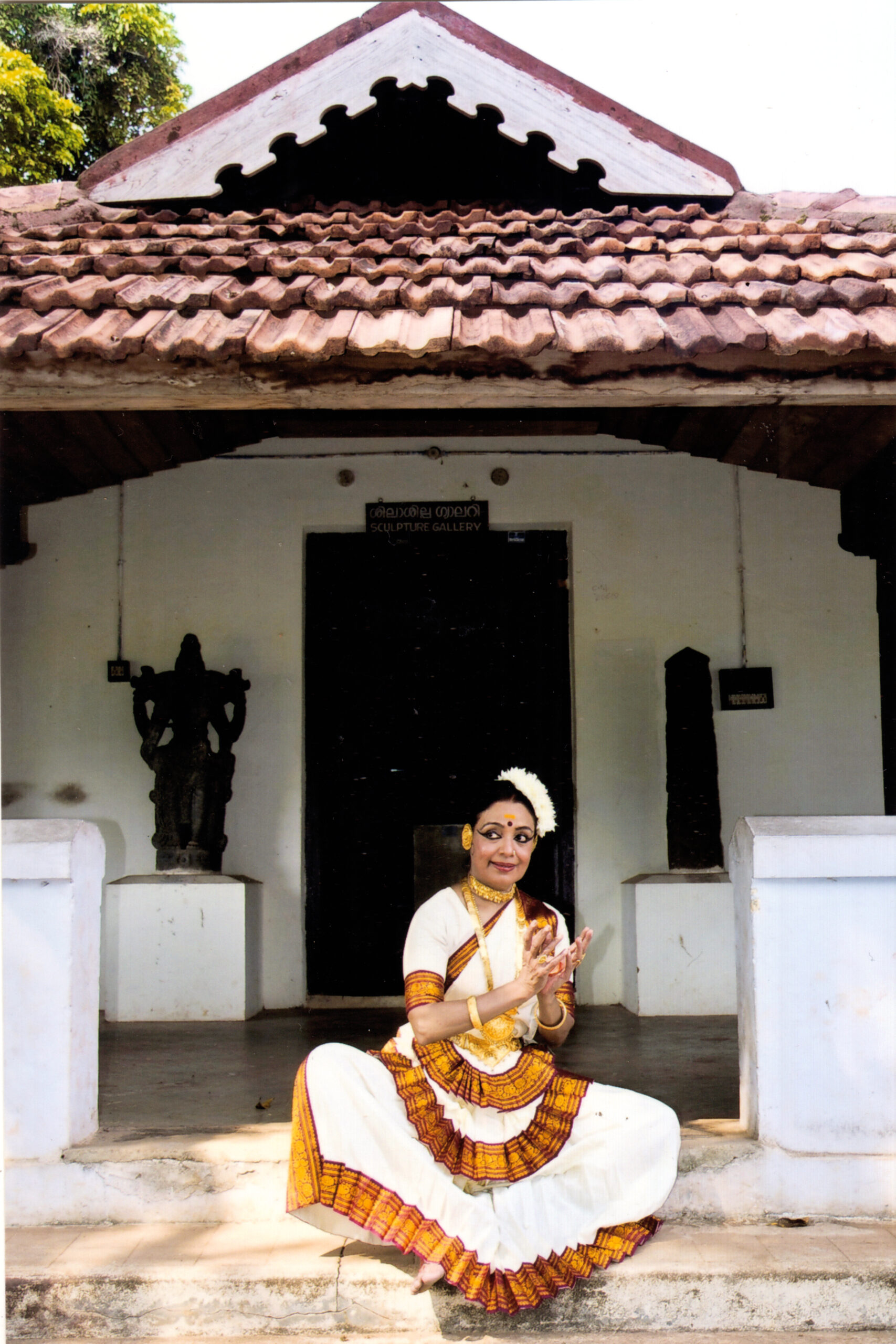
“Now that we collected everything why don’t we create a new repertoire,” he said to her. That was how she came up with a new format, a new repertoire where they created few items which reflected all the observations and experiences. It took a few years for her to do it as she believed it needed to be done with conviction.It was a challenge for her to establish her work as opposition and criticism came her way because she did not belong to Kerala. “It is natural for people to criticise because I did not belong to Kerala. They felt someone from another state should not tell them about their traditions. That only made my conviction clearer. If Mohiniyattam needed to have its own identity, its own standing in the field of Indian Classical dance, then this is how it should be. My repertoire is different, and it reflected my research,” she says. She was someone who believed collecting information and speaking about it was not enough. As a performer, she tried to translate her research and observation into choreography, for people to see. “My work is performance oriented,” she says. Her work has been documented by the Sangeet Natak Akademi.
Her association with Mohiniyattam has been at various levels. “At an emotional level, I simply loved it like a mother would love her child – unconditionally. I felt that it needed to be nourished and enriched. All the time, I had a maternal concern for it. I wanted the world to appreciate it and widen the viewership. I could successfully do it with my performances being essentially a performer,” she explains.
After successfully establishing the art form, much later, she tried to further widen the art form by writing books about it. Her research into the cultural legacy of Kerala culminated in the publication of her book, ‘The Art of Mohiniyattam’, making it one of the most illuminating works on the form and spirit of Mohiniyattam. She authored another book titled ‘Mohiniyattam’, and Abdul Kalam, the former President of India, released it at Rashtrapati Bhavan in 2004. “There have been challenges but people who have always supported me were scholars and historians. Today, I am happy that the awareness of Mohiniyattam has caught on with the coming generation and they have been researching about it at a holistic level,” she says. Currently, she is working on the aesthetics of Mohiniyattam.
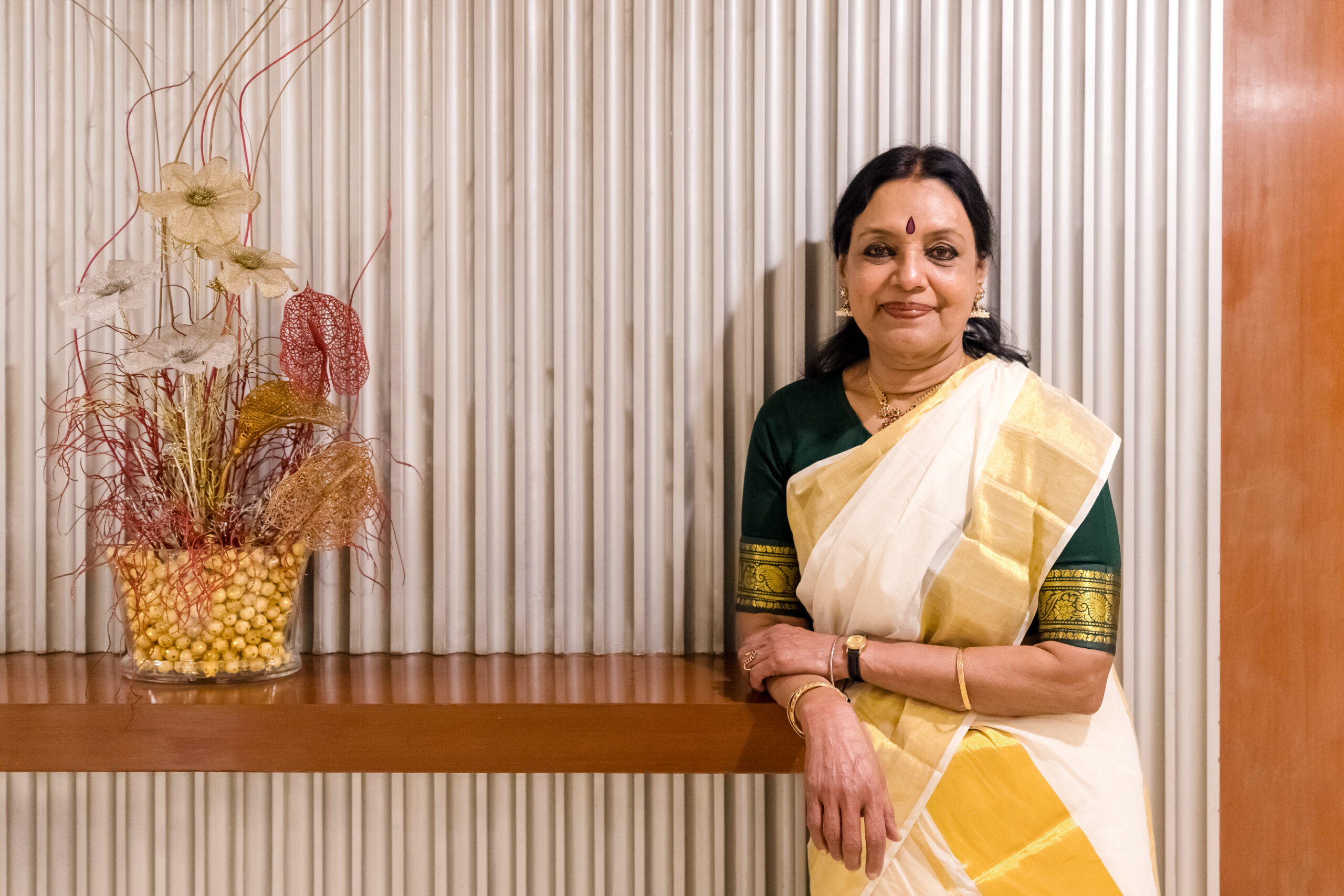
In 1984, she established an institute for Mohiniyattam titled ‘Kalambalam’ in Delhi. In 1995, it was renamed the Centre For Mohiniyattam (CFM). “TN Seshan, a former Chief Election Commissioner of India, agree to be the first president of the institution,” she says. CFM’s activities involve research, training, documentation and propagation of Mohiniyattam. Her daughter Vijayalakshmi has taken to Mohiniyattam seriously and established an institution in the USA.
Bharati has done extensive work on the Geeta Govinda tradition which has been prevalent in the temples of Kerala. Bharati has added a new dimension to Mohiniyattam by successfully presenting innovative group choreographic productions, including Chandrotsavam, Soma-Stuthi, Deva-Githa, Athira and Swan Lake (a concept by Vijayalakshmi). Her wide experience researching into the interdisciplinary traditions led her to choreograph some classic plays in the theatre. She worked as a choreographer for Kavalam Narayana Panicker’s Dhootavakyam’, National School of Drama’s ‘Abhigyana Shakuntalam’ directed by Kumara Verma, and ‘Viddyottama’ directed by Mohan Maharishi.
Apart from performing extensively both within the country and abroad, she has also produced documentary films on Mohiniyattam for Doordarshan and Films Division. Over the years, through innumerable presentations, Bharati has played a significant role in not only starting and kindling interest in audiences within the country and abroad but adding a refreshing dimension to Mohiniyattam.
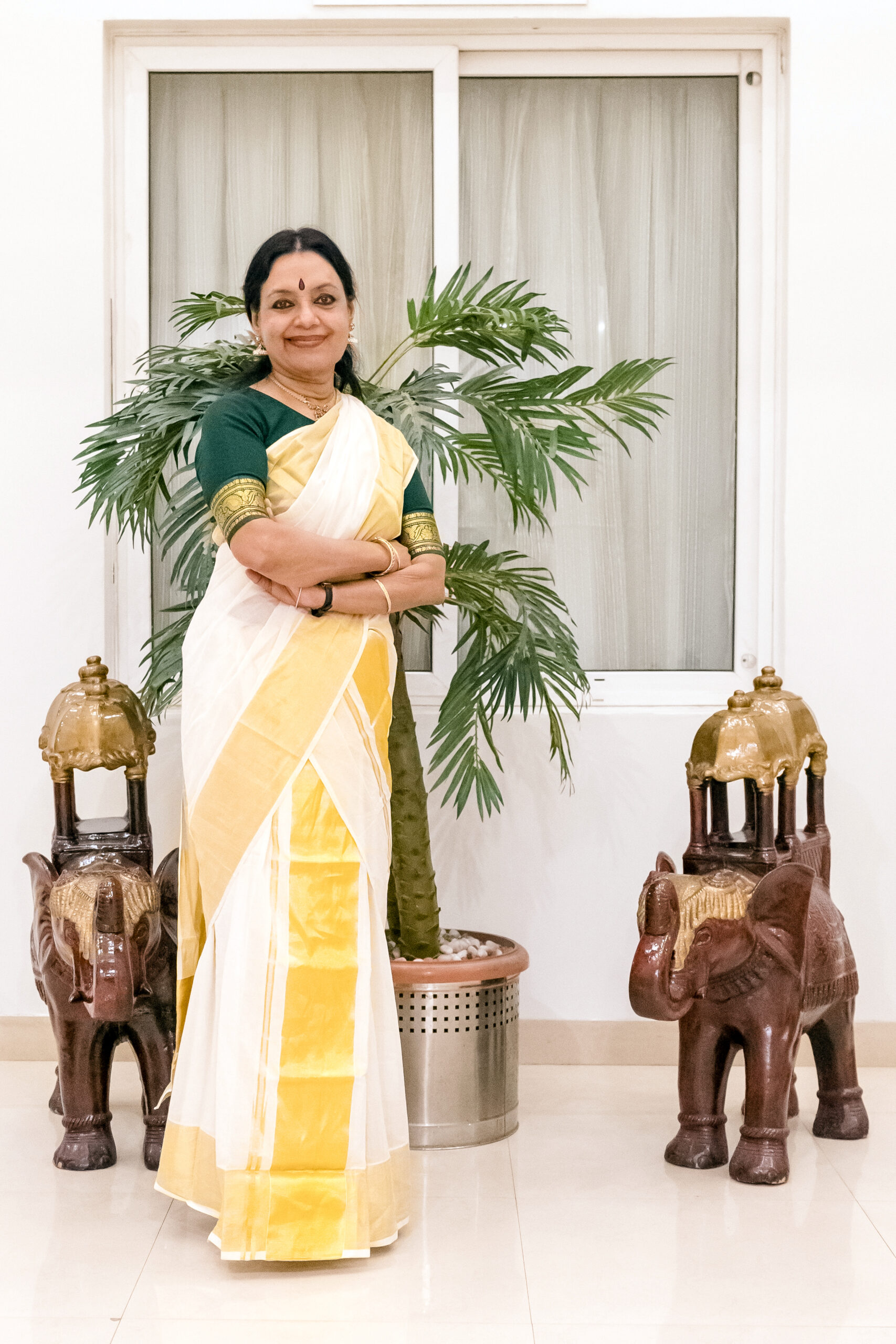
For her contributions she has received many awards and accolades including the title of Lasya Lakshmi by the Kunchan Nambiar Memorial Trust, Kerala; Sahitya Kala Parishad Samman by the Delhi Administration; the title of Nritya Choodamani by the Krishna Gana Sabha, Chennai; felicitation at the Theatre de la Ville, France by the Mayor of Paris, for being a one-woman crusade in popularising Mohiniyattam; the Central Sangeet Natak Akademi Award; Padma Shri by the Government of India and the title of ‘Kalaratana’ by Kerala Kalamandalam, the Government of Kerala.
Bharati Shivaji has performed widely all over the world including the US, Latin America, Africa, Southeast Asia, Europe and Mexico. In 2002, she was invited to perform at the prestigious International Edinburgh Festival in Scotland, UK, where it was for the first time in history that Mohiniyattam was presented. In 2005, she had the rare honour of being invited to present Swan Lake at the world-famous Bolshoi Theatre, Moscow, and the Conservatory Theatre in St. Petersburg, organised by the department of culture, Government of India. Another unique honour for Bharati Shivaji was to be invited to choreograph Mohiniyattam, in the classical dance segment for the Opening Ceremony of the Commonwealth Games held in October 2011 at New Delhi.
“The younger generation have to remember and practice two important things — humility and gratitude. They are essential. Today, youngsters learn two pieces from a guru and they become great gurus themselves. What have they learnt? One’s lifetime is not enough to learn an art form. The thought keeps you grounded,” she concludes.
“Mohiniyattam is a powerful, graceful art form for, grace has its own power” – Bharati Shivaji

